 W
WThe USS Arizona Memorial, at Pearl Harbor in Honolulu, Hawaii, marks the resting place of 1,102 of the 1,177 sailors and Marines killed on USS Arizona during the attack on Pearl Harbor on December 7, 1941, and commemorates the events of that day. The attack on Pearl Harbor led to the United States' involvement in World War II.
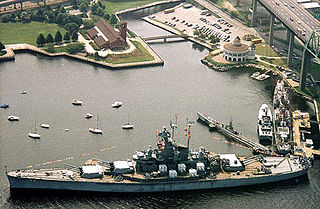 W
WBattleship Cove is a nonprofit maritime museum and war memorial in Fall River, Massachusetts, United States. Featuring the world's largest collection of World War II naval vessels, it is home to the highly decorated battleship USS Massachusetts. It is located at the heart of the waterfront at the confluence of the Taunton River and Mount Hope Bay and lies partially beneath the Braga Bridge and adjacent to Fall River Heritage State Park.
 W
WBattleship Memorial Park is a military history park and museum located on the western shore of Mobile Bay in Mobile, Alabama. It has a collection of notable aircraft and museum ships including the South Dakota-class battleship USS Alabama and Gato-class submarine USS Drum. USS Alabama and USS Drum are both National Historic Landmarks; the park as a whole was listed on the Alabama Register of Landmarks and Heritage prior to that time, on October 28, 1977.
 W
WThe Battleship New Jersey Museum and Memorial is located at 62 Battleship Place, Camden, New Jersey, United States. This museum ship preserves and displays USS New Jersey, the most decorated battleship to have served in the U.S. Navy and one of the largest ever built.
 W
WUSS Becuna (SS/AGSS-319), a Balao-class submarine, is a former ship of the United States Navy named for the becuna, a pike-like fish of Europe. She was designated a National Historic Landmark for her service in World War II, for which she earned four battle stars. She presently serves as a museum ship at the Independence Seaport Museum in Philadelphia, Pennsylvania.
 W
WThe Boston Navy Yard, originally called the Charlestown Navy Yard and later Boston Naval Shipyard, was one of the oldest shipbuilding facilities in the United States Navy. It was established in 1801 as part of the recent establishment of the new U.S. Department of the Navy in 1798. After 175 years of military service, it was decommissioned as a naval installation on 1 July 1974.
 W
WUSS Bowfin (SS/AGSS-287), is a Balao-class submarine of the United States Navy named for the bowfin fish. Since 1981, she has been open to public tours at the USS Bowfin Submarine Museum and Park in Pearl Harbor, Hawaii, next to the USS Arizona Memorial Visitor Center.
 W
WThe Buffalo and Erie County Naval & Military Park, formerly known as The Buffalo Naval and Servicemen's Park, is a museum on the shore of Lake Erie in Buffalo, New York. It is home to several decommissioned US Naval vessels, including the Cleveland-class cruiser USS Little Rock, the Fletcher-class destroyer USS The Sullivans, and the submarine USS Croaker. All three are open to the public for tours.
 W
WUSS Cairo was one of the first American ironclad warships built at the beginning of the U.S. Civil War.
 W
WThe Coast Guard Museum Northwest is dedicated to preserving the heritage of the United States Coast Guard in the Pacific Northwest. The museum is located on the property of Coast Guard Station Seattle on the Elliott Bay waterfront south of Downtown, Seattle, Washington. It covers the full range of Coast Guard roles, ranging from protecting shores, lives and property to lighthouses and lightships, from life-saving stations to rescue boats, from buoy tenders to icebreakers and weather ships and from modern aircraft to patrol boats and cutters. The museum admittance is free of charge.
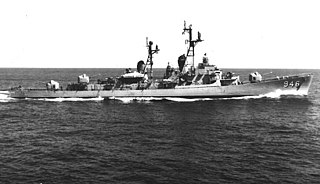 W
WUSS Edson (DD-946) is a Forrest Sherman-class destroyer, formerly of the United States Navy, built by Bath Iron Works in Maine in 1958. Her home port was Long Beach, California and she initially served in the Western Pacific/Far East, operating particularly in the Taiwan Strait and off the coast of Vietnam. Her exceptionally meritorious service in 1964 in the Gulf of Tonkin was recognized with the first of three Navy Unit Commendations. During the following years she was shelled by North Vietnamese land forces, and apparently received friendly fire from the US Air Force.
 W
WThe USS Hornet Museum is a museum ship, located on the southernmost pier of the former Naval Air Station Alameda in Alameda, California, US.
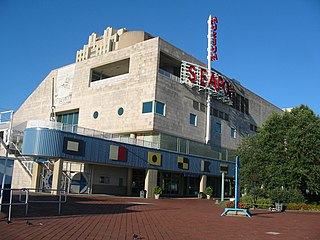 W
WThe Independence Seaport Museum was founded in 1961 and is located in the Penn's Landing complex along the Delaware River in Philadelphia, Pennsylvania. The collections at the Independence Seaport Museum document maritime history and culture along the Delaware River. At the museum are two National Historic Landmark ships and the J. Welles Henderson Archives and Library.
 W
WThe Intrepid Sea, Air & Space Museum is an American military and maritime history museum in New York City with a collection of museum ships. It is located at Pier 86 at 46th Street, along the Hudson River, in the Hell's Kitchen neighborhood on the West Side of Manhattan. The museum showcases the aircraft carrier USS Intrepid, the cruise missile submarine USS Growler, a Concorde SST, a Lockheed A-12 supersonic reconnaissance plane, and the Space Shuttle Enterprise. On the lower deck there is also a reproduction of a World War I biplane.
 W
WThe Japanese Garden of Peace is a peace garden installed at the National Museum of the Pacific War in Fredericksburg, Texas.
 W
WUSS Lexington (CV/CVA/CVS/CVT/AVT-16), nicknamed "The Blue Ghost", is an Essex-class aircraft carrier built during World War II for the United States Navy. Originally intended to be named Cabot, word arrived during construction that USS Lexington (CV-2) had been lost in the Battle of the Coral Sea. The new aircraft carrier was renamed while under construction to commemorate the earlier ship.
 W
WUSS Lucid (AM-458/MSO-458) is an Aggressive-class minesweeper acquired by the U.S. Navy for the task of removing naval mines that had been placed in the water to prevent the safe passage of ships. She was launched soon after the Korean War, sailed on five Western Pacific (Westpac) cruises and served four tours in Vietnam during the Vietnam War. Lucid was decommissioned at the end of 1970 and placed in mothballs after only 15 years of service, as the Vietnam War was winding down and there was no longer a need for a large fleet of minesweepers. She was purchased by civilians and served as a houseboat for ten years, before being sold again in 1986 and used as a warehouse by a scrap metal dealer on Bradford Island, in the Sacramento–San Joaquin River Delta. The scrap metal dealer was murdered in 2004 over a property dispute, and in 2005, Lucid was acquired by a foundation seeking to save a ship of its class. In 2011, the ship was moved to the Stockton Maritime Museum to be restored for use as a museum ship. Lucid is the last Aggressive-class minesweeper afloat in the United States.
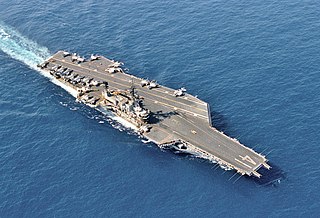 W
WUSS Midway (CVB/CVA/CV-41) is an aircraft carrier, formerly of the United States Navy, the lead ship of her class. Commissioned a week after the end of World War II, Midway was the largest ship in the world until 1955, as well as the first U.S. aircraft carrier too big to transit the Panama Canal. She operated for 47 years, during which time she saw action in the Vietnam War and served as the Persian Gulf flagship in 1991's Operation Desert Storm. Decommissioned in 1992, she is now a museum ship at the USS Midway Museum, in San Diego, California, and is the only remaining inactive U.S. aircraft carrier that is not an Essex-class aircraft carrier.
 W
WThe Military Sea Services Museum, located at 1402 Roseland Avenue, Sebring, Florida, developed from the ideas of the members of Branch 173 of the Fleet Reserve Association (FRA). The members discussed "displaying their memorabilia to 'dress up' the building and promote the military sea services.". The museum was established in 1998, with the "Grand Opening" occurring on Memorial Day, and contains artifacts and exhibits relating to the U.S. Coast Guard, U.S. Marines and U.S. Navy, including state flags, posters, military items, and sea services memorabilia.
 W
WUSS Missouri (BB-63) is an Iowa-class battleship and was the third ship of the United States Navy to be named after the U.S. state of Missouri. Missouri was the last battleship commissioned by the United States and is best remembered as the site of the surrender of the Empire of Japan, which ended World War II.
 W
WThe National Civil War Naval Museum, located in Columbus, Georgia, United States, is a 40,000-square-foot (3,700 m2) facility that features remnants of two Confederate States Navy vessels. It also features uniforms, equipment and weapons used by the United States (Union) Navy from the North and the Confederate States Navy forces. It is claimed to be the only museum in the nation that tells the story of the two navies during the Civil War.
 W
WThe National Museum of the Pacific War is located in Fredericksburg, Texas, the boyhood home of Fleet Admiral Chester W. Nimitz. Nimitz served as CinCPAC, Commander in Chief, United States Pacific Fleet and was soon afterward named Commander in Chief, Pacific Ocean Areas during World War II. The six acre site includes the Admiral Nimitz Museum which is housed in the old Nimitz Hotel and tells the story of Nimitz beginning with his life as a young boy through his naval career as well as the evolution of the old hotel.
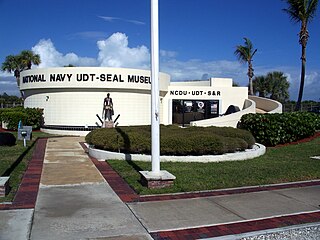 W
WThe National Navy UDT-SEAL Museum, also known as the Navy SEAL Museum, is located in St. Lucie County, just outside Fort Pierce, Florida. It houses exhibits to inform and educate on the role of Navy Underwater Demolition Teams (UDT) and Sea, Air, Land (SEAL) teams. The museum also preserves the history of the SEALs.
 W
WNauticus is a maritime-themed science center and museum located on the downtown waterfront in Norfolk, Virginia, also known as the National Maritime Center.
 W
WThe Naval Museum of Armament & Technology (NMAT) preserves and interprets the history of Naval Air Weapons Station China Lake and its heritage of advancing Naval aviation armament and technology. This museum is the repository of artifacts, photographs and film, documents and related heritage memorabilia from China Lake. The museum is dedicated to those who have employed their talents in advancing Naval aviation research, development, testing and evaluation, as well as the history of the Secret City.
 W
WThe New Jersey Naval Museum (NJNM) was a museum located along the Hackensack River in Hackensack in Bergen County, New Jersey, United States. Its mission was dedicated to the state's Navy heritage and naval history in general. The prominent element in the collection was the USS Ling (SS-297), a 312-foot (95 m) long Balao-class submarine of World War II. The museum land has since been sold for redevelopment, however the USS Ling remains grounded in the river, with an uncertain future. Efforts have been made since 2007 to find a new home for the Ling. In 2019, the Louisville Naval Museum began a campaign to attempt to relocate the ship to the Ohio River.
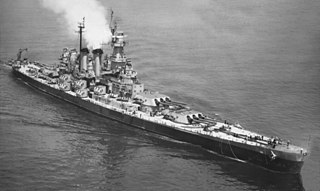 W
WUSS North Carolina (BB-55) is the lead ship of the North Carolina class of fast battleships, the first vessel of the type built for the United States Navy. Built under the Washington Treaty system, North Carolina's design was limited in displacement and armament, though the United States used a clause in the Second London Naval Treaty to increase the main battery from the original armament of twelve 14-inch (356 mm) guns to nine 16 in (406 mm) guns. North Carolina was the most decorated U.S. battleship of World War II with 15 battle stars, having participated in every major naval offensive in the Pacific from Guadalcanal to Tokyo Bay.
 W
WUSS Olympia (C-6/CA-15/CL-15/IX-40) is a protected cruiser that saw service in the United States Navy from her commissioning in 1895 until 1922. This vessel became famous as the flagship of Commodore George Dewey at the Battle of Manila Bay during the Spanish–American War in 1898. The ship was decommissioned after returning to the U.S. in 1899, but was returned to active service in 1902.
 W
WUSS Pampanito (SS-383/AGSS-383), a Balao-class submarine, was a United States Navy ship, the third one named for the pompano fish. She completed six war patrols from 1944 to 1945 and served as a Naval Reserve Training ship from 1960 to 1971. She is now a National Historic Landmark, preserved as a memorial and museum ship in the San Francisco Maritime National Park Association located at Fisherman's Wharf.
 W
WPatriots Point Naval & Maritime Museum is located in Mount Pleasant, South Carolina, at the mouth of the Cooper River on the Charleston Harbor, across from Charleston.
 W
WThe Patuxent River Naval Air Museum preserves and interprets the Patuxent River Naval Air Base history and heritage of advancing US Naval aviation technology. This museum is the repository of artifacts, photographs and film, documents, and related heritage memorabilia from Patuxent River and other stations, such as Warminster, PA, and Trenton, NJ, that have been consolidated at Patuxent River. The museum is dedicated to those who have employed their talents in advancing Naval aviation research, development, testing, and evaluation.
 W
WThe Portsmouth Naval Shipyard Museum and the associated Lightship Museum are located on the downtown Portsmouth, Virginia, United States waterfront. The museum covers the 250+ year relationship with the shipyard - America's oldest and largest naval shipyard located on the Portsmouth Waterfront. The city and the shipyard have been intertwined since the founding of the Gosport Shipyard in 1767, which was later renamed Norfolk Navy Yard and finally Norfolk Naval Shipyard. This rich history is told through exhibits, hands-on programs and special events.
 W
WUSS Razorback (SS-394), a Balao-class submarine, was the only ship of the United States Navy to be named after the razorback, a species of whale found in the far southern reaches of the Pacific Ocean. It is arguably the longest-serving combat front-line submarine still existing in the world, having been commissioned by two different countries for 56 years of active duty. In 2004, the state of Arkansas adopted the submarine and is now a museum ship at the Arkansas Inland Maritime Museum.
 W
WSS Red Oak Victory is a U.S. military Victory ship of the Boulder Victory-class cargo ship used in the Second World War. She was preserved to serve as a museum ship in Richmond, California, and is part of the Rosie the Riveter/World War II Home Front National Historical Park. She was one of 534 Victories built during World War II, but one of only a few of these ships to be transferred from the Merchant Marine to the United States Navy. She was named after Red Oak, Iowa, which suffered a disproportionate number of casualties in early World War II battles.. The ship was active during World War II, the Korean War, and the Vietnam War.
 W
WUSS Requin (SS/SSR/AGSS/IXSS-481), a Tench-class submarine, was the only ship of the United States Navy to be named after the requin, French for shark. Since 1990 it has been a museum ship at The Carnegie Science Center in Pittsburgh, Pennsylvania.
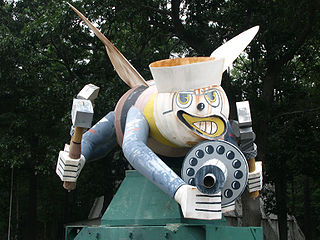 W
WSeabee Museum and Memorial Park is a non-profit military history museum in Davisville, Rhode Island, devoted to the Seabees of the U.S. Navy.
 W
WSeawolf Park is a memorial to USS Seawolf (SS-197), a United States Navy Sargo-class submarine mistakenly sunk by U.S. Navy forces in 1944 during World War II. It is located on Pelican Island, just north of Galveston, Texas, in the United States.
 W
WUSS Slater (DE-766) is a Cannon-class destroyer escort that served in the United States Navy and later in the Hellenic (Greek) Navy. The ship was named for Frank O. Slater of Alabama, a sailor killed on the cruiser USS San Francisco during the Naval Battle of Guadalcanal. He was posthumously awarded the Navy Cross for gallantry in action and the Purple Heart. Following service during World War II, the ship was transferred to Greece and renamed Aetos. Decommissioned in 1991, the destroyer escort was returned to the United States.
 W
WUSS Texas (BB-35), is a former United States Navy New York-class battleship. She was launched on 18 May 1912 and commissioned on 12 March 1914.
 W
WThe U.S. Customshouse is a historic customs house and United States Coast Guard museum on Cobbs Hill at 3353 Main Street in Barnstable, Massachusetts. Built in 1855 to a design by Ammi Young, it was used as a custom house and post office until 1913, continuing to house the post office and other offices until 1958. It was converted into a museum in 1960, and was listed on the National Register of Historic Places in 1975.
 W
WThe United States Naval Shipbuilding Museum is a private non-profit museum in Quincy, Massachusetts featuring USS Salem (CA-139), a heavy cruiser docked at the former Fore River Shipyard where she was laid down in 1945. The museum was established in 1993, in response to efforts by local officials and volunteers to revive the shipyard area after operations at Fore River ended in 1986. Several exhibits are on board Salem relating to United States naval history and shipbuilding. Before being moved to a different pier, the museum featured dockside fixtures and a miniature golf course.
 W
WThe USS Constitution Museum is located in the Charlestown Navy Yard, which is part of the Boston National Historical Park in Boston, Massachusetts, United States. The museum is situated near the ship USS Constitution at the end of Boston's Freedom Trail. The museum is housed in a restored shipyard building at the foot of Pier 2.
 W
WUSS Indianapolis (CL/CA-35) was a Portland-class heavy cruiser of the United States Navy, named for the city of Indianapolis, Indiana. Launched in 1931, the vessel served as the flagship for the commander of Scouting Force 1 for eight years, then as flagship for Admiral Raymond Spruance in 1943 and 1944 while he commanded the Fifth Fleet in battles across the Central Pacific during World War II.
 W
WThe USS Midway Museum is a historical naval aircraft carrier museum located in downtown San Diego, California at Navy Pier. The museum consists of the aircraft carrier Midway. The ship houses an extensive collection of aircraft, many of which were built in Southern California.
 W
WThe Virginia Beach Surf & Rescue Museum honors and preserves the history of Virginia's maritime heritage, coastal communities, the United States Lifesaving Service, and the United States Coast Guard along the Atlantic coast.
 W
WThe Naval Air Station Wildwood Aviation Museum is an aviation museum located at the Cape May Airport in Lower Township, in Cape May County, New Jersey, United States.
 W
WUSS Wisconsin (BB-64) is an Iowa-class battleship, the second ship of the United States Navy to be named in honor of the U.S. state of Wisconsin. She was built at the Philadelphia Naval Shipyard in Philadelphia, Pennsylvania and launched on December 7, 1943, sponsored by the wife of Governor Walter Goodland of Wisconsin.
 W
WUSS Yorktown (CV/CVA/CVS-10) is one of 24 Essex-class aircraft carriers built during World War II for the United States Navy. She was named after the Battle of Yorktown of the American Revolutionary War, and is the fourth U.S. Navy ship to bear the name. Initially to have been named Bonhomme Richard, she was renamed Yorktown while still under construction to commemorate the loss of USS Yorktown (CV-5) during the Battle of Midway in June 1942. Yorktown was commissioned in April 1943, and participated in several campaigns in the Pacific Theater of Operations, earning 11 battle stars and the Presidential Unit Citation.